Your Dishwasher Probably Hates You. Here’s How to Fix It.
After spending a couple of decades as an appliance technician, I’ve seen the inside of more dishwashers than I can count. I’ve gotten calls for everything you can imagine—from mysterious puddles on the floor to dishes that somehow come out dirtier than they went in. And honestly, most of the time, the problem isn’t a broken machine. It’s that people treat their dishwasher like a magic box instead of the powerful tool it is.
In this article
You just stuff it full, push a button, and hope for the best, right? But a dishwasher is a precision machine running a high-temperature, high-pressure cleaning event. Once you get how it works, you can get sparkling dishes every single time, protect your nice glassware, and seriously extend the life of your appliance. Forget the weird hacks you see online; let’s walk through this the way the pros do.
So, What’s Actually Happening in There?
Before you even think about loading, let’s peek behind the curtain. It’s not a gentle bath in there; it’s a carefully choreographed storm. First, the machine fills a small basin at the bottom with water. A heating element kicks on, getting that water piping hot—usually somewhere between 120°F and 150°F.
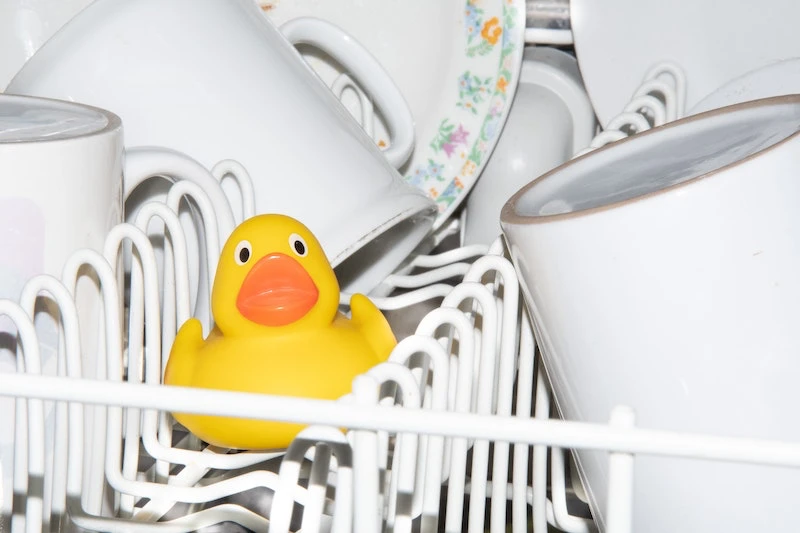
Then, the detergent drops in. A powerful pump blasts that hot, soapy water through spray arms that spin around, thanks to the force of the water shooting out of angled nozzles. This is the key. Anything that blocks the path of that water creates a “spray shadow,” which is the number one reason for dirty dishes. Think of a big pan laid flat on the bottom rack; it acts like an umbrella, shielding everything above it from getting clean.
After the wash, the dirty water drains, and the machine rinses everything with fresh water. If you use a rinse aid, it gets dispensed now. Finally, a drying cycle uses either leftover heat or a dedicated fan to get things ready for the cupboard.
The #1 Mistake: Pre-Rinsing Your Dishes
I know, this is the one piece of advice everyone fights me on, but it’s pure science. Modern dishwasher detergents are packed with enzymes designed to attack food. One type of enzyme goes after proteins (like egg and cheese), while another targets starches (like potato and rice). These enzymes need something to latch onto.
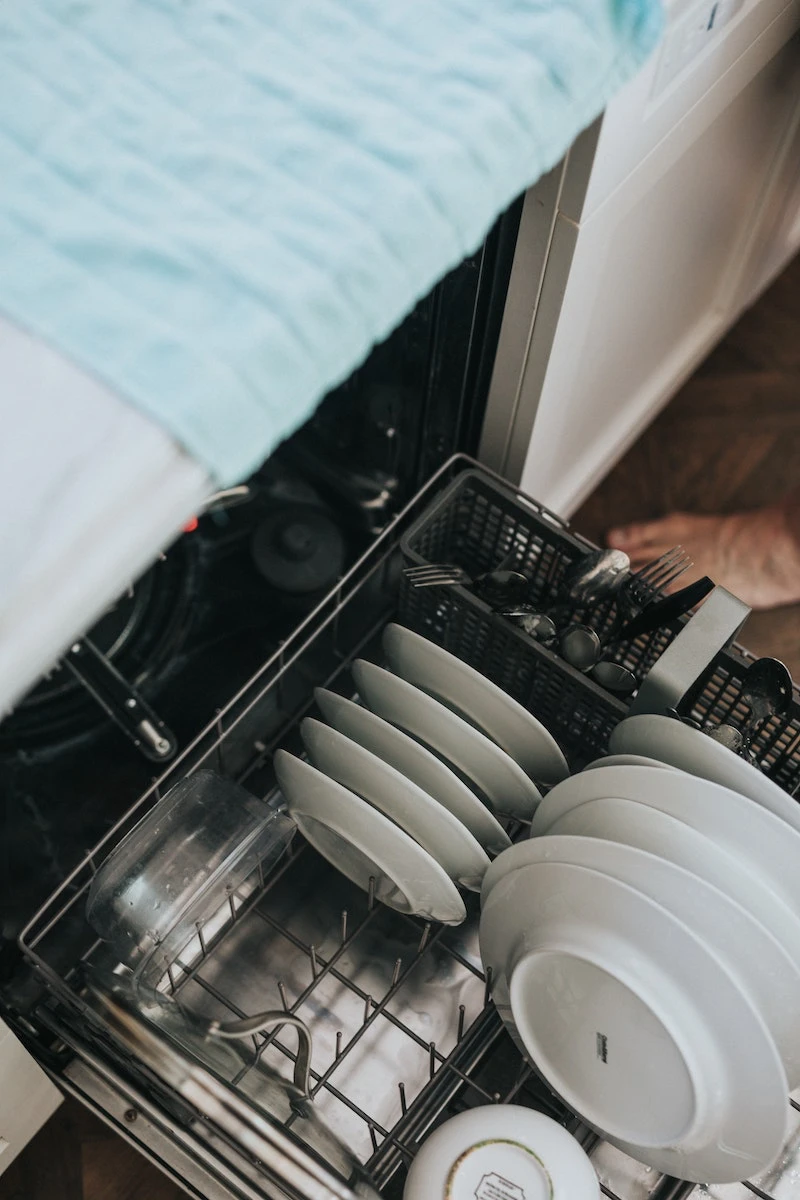
When you pre-rinse your dishes until they’re spotless, the detergent has nothing to do. The high concentration of chemicals can actually be too harsh, leading to a cloudy film on your glassware called etching. That’s not a film you can wipe off; it’s permanent microscopic scratching. Ouch.
The right way? Scrape, don’t rinse. Use a spatula to get the big chunks off. A little sauce or grease is not only fine, it’s good for the wash cycle. By the way, this one change will save you a ton of time and water. Did you know that handwashing a full load can use up to 27 gallons of water? A modern, efficient dishwasher uses as little as 3 to 5. So you’re not just getting cleaner dishes—you’re doing your water bill a huge favor.
Let’s Talk Detergent: Pods vs. Powder vs. Gel
Walking down the detergent aisle can be confusing. Everyone wants to know which one is best. To be frank, they are not all created equal.
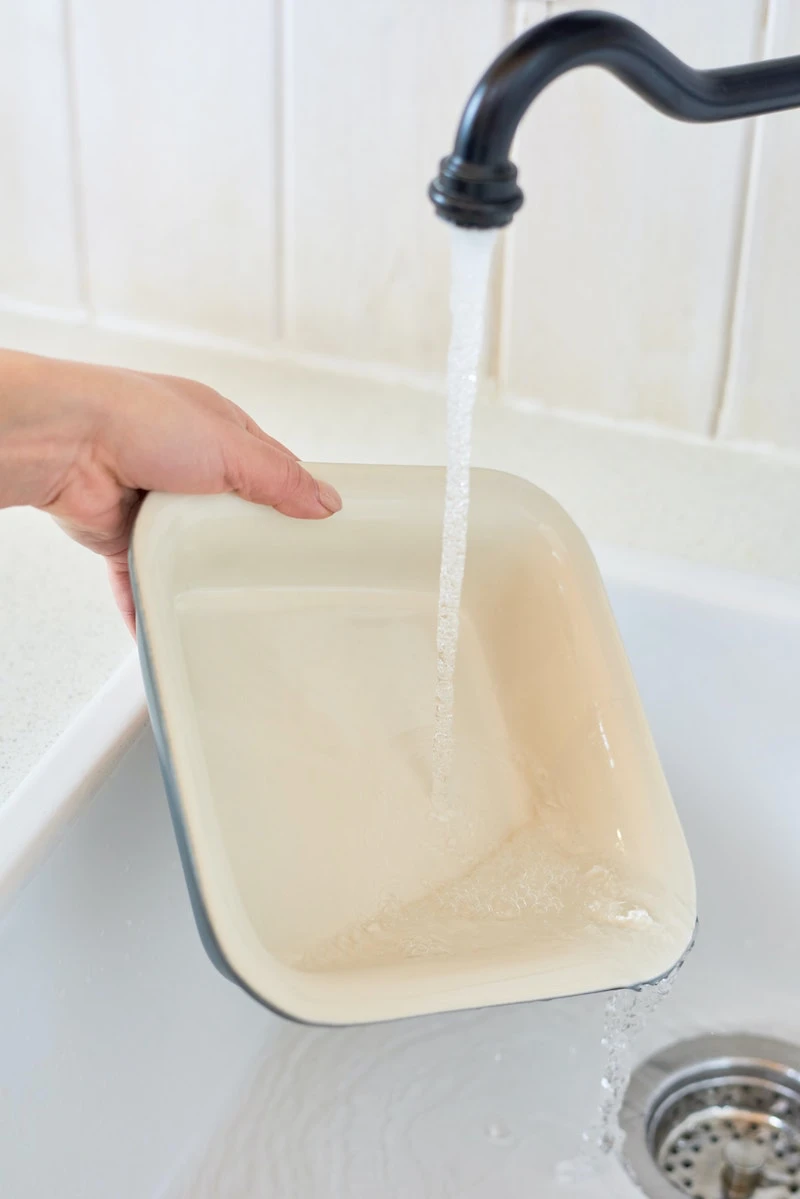
- Powder Detergents: This is my go-to recommendation. Powders, especially enzyme-heavy ones like Cascade Complete or Finish Classic, offer the best cleaning power. The biggest advantage is that you can adjust the dose. Got a small, lightly soiled load? Use less. Battling really hard water? You can add a little more. It’s the most cost-effective and flexible option.
- Pods and Tablets: These are all about convenience, and I get the appeal. They are pre-measured and easy to use. The downside? They’re pricey, and you can’t adjust the dose. For smaller loads, you might be using way more detergent than you need, which can be harsh on your dishes over time. They work well, but you pay for the convenience.
- Gel Detergents: Honestly? I’d skip these. Gels are generally the least effective of the three. They often lack the enzymes needed for tough, baked-on food and don’t have the gentle scrubbing power of powders. They’re better than nothing, but you’ll get a much better clean from a good powder.
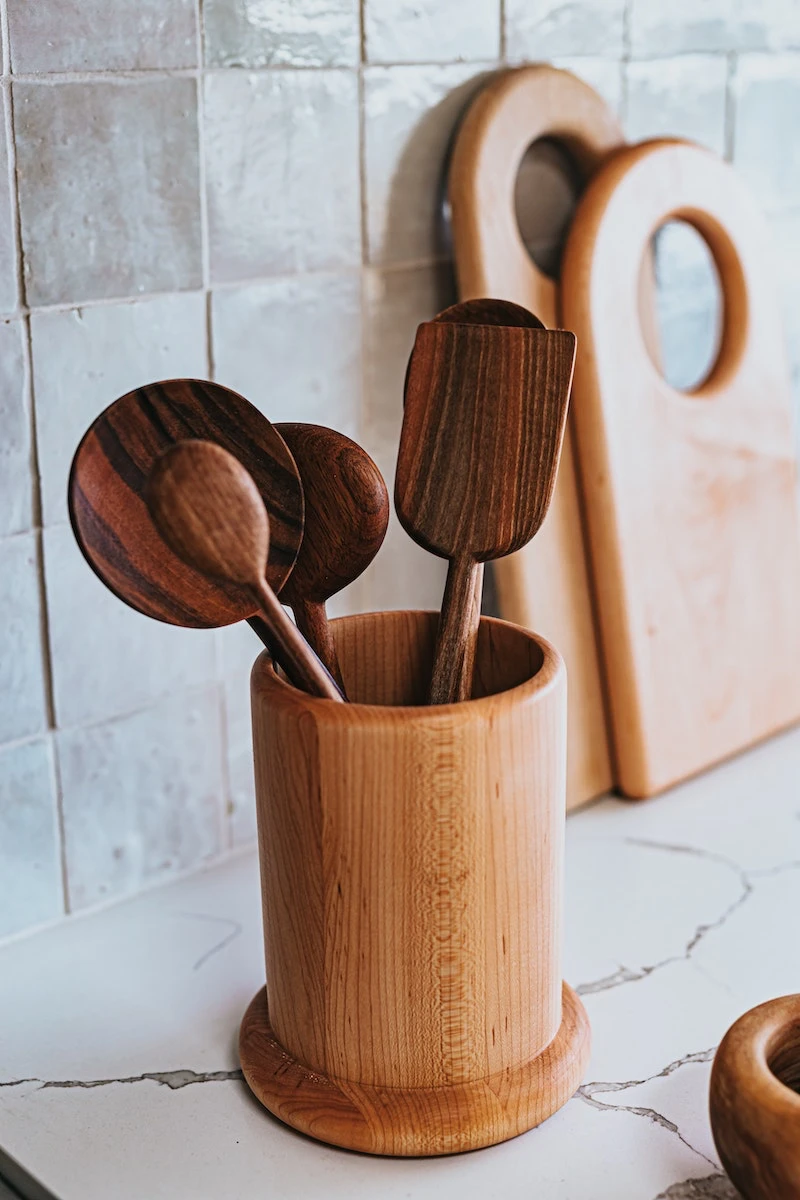
How to Load a Dishwasher Like You Know What You’re Doing
Proper loading is all about creating clear paths for that water to spray. I always tell people to load from back to front; it just makes it easier to see what you’re doing. And when you unload, do the opposite: empty the bottom rack first. This prevents any water pooled on top of a mug from dripping all over your nice, dry plates below.
The Bottom Rack: The Power Zone
This rack gets the most intense spray and the highest heat. It’s where your dirtiest, most durable items should go.
- Plates and Big Bowls: Stand these up between the tines, with the dirty side facing the center spray arm. Don’t let them lean on each other—water can’t clean surfaces that are touching!
- Pots and Pans: Place these along the sides or back of the rack, never flat in the middle. Always angle the dirty surface face down so it gets blasted directly and can drain easily.
- Cutlery Basket: The great debate! For the best clean, mix it up. Put spoons and forks in with handles down so the business end gets fully washed. But for safety, place sharp knives with points down and handles up. The most important thing is to stop spoons from “nesting” together. Alternating some handles up and some down is a great way to guarantee they all get clean. If you have a third-level cutlery rack, use it. It’s a game-changer.
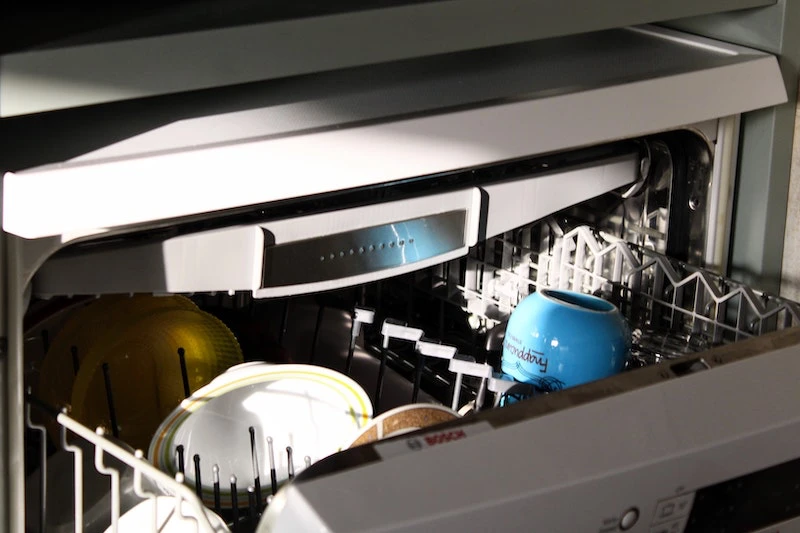
The Top Rack: The Safe Zone
The top rack gets a gentler wash and is further from the intense heat of the drying element. It’s the perfect spot for more delicate items.
- Glasses and Mugs: Place these upside down between the tines, not on top of them. Angling them slightly helps water run off the bottoms instead of pooling.
- Plastics: Heads up! This is non-negotiable. All dishwasher-safe plastics go on the top rack. The heating element at the bottom can get hot enough to warp or melt them. I’ve personally had to service a machine where a melted Tupperware lid clogged the entire pump assembly. That’s an easy $200-$300 repair bill that is completely avoidable. Always check for the “dishwasher safe” symbol.
- Long Utensils: Lay things like spatulas and ladles flat on the top rack. If you stand them up in the cutlery basket, they can block the spray arm from spinning.
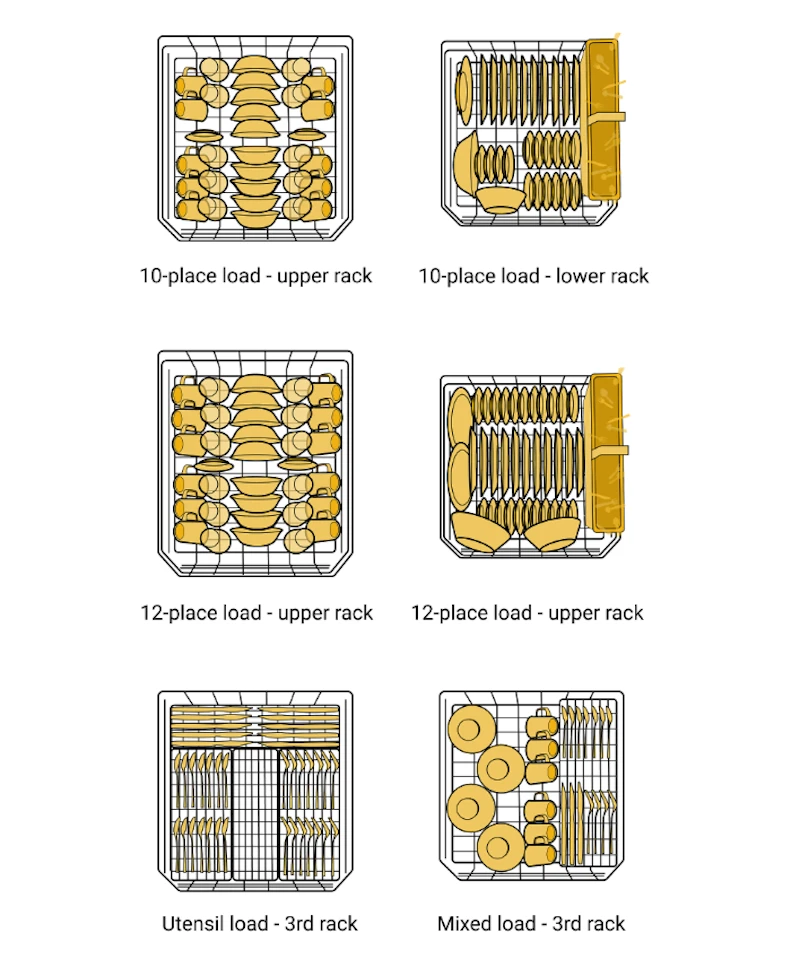
What to NEVER Put in Your Dishwasher
That powerful cleaning environment can be destructive. Keep these items out to protect them—and your machine.
- Good Knives: The harsh detergent dulls the blade, and the heat can crack wooden handles. Plus, the sharp edge can nick the vinyl coating on your dishwasher racks, which will eventually cause them to rust.
- Anything Wooden: Cutting boards, spoons, bowls… wood will absorb water, then crack and warp as it dries. Handwash only.
- Cast Iron: Dishwasher detergent will strip away that beautiful, non-stick seasoning you’ve worked so hard to build, leading to instant rust. Don’t do it!
- Non-Stick Pans: Even if they say “dishwasher safe,” handwashing is better. The high heat and harsh detergents will break down the non-stick coating over time.
- Fine China & Crystal: Don’t risk it. The patterns can be blasted off, and delicate crystal can crack or get that permanent cloudy etching.
- Copper, Brass, or Soft Aluminum: These metals can discolor or pit from the detergents.
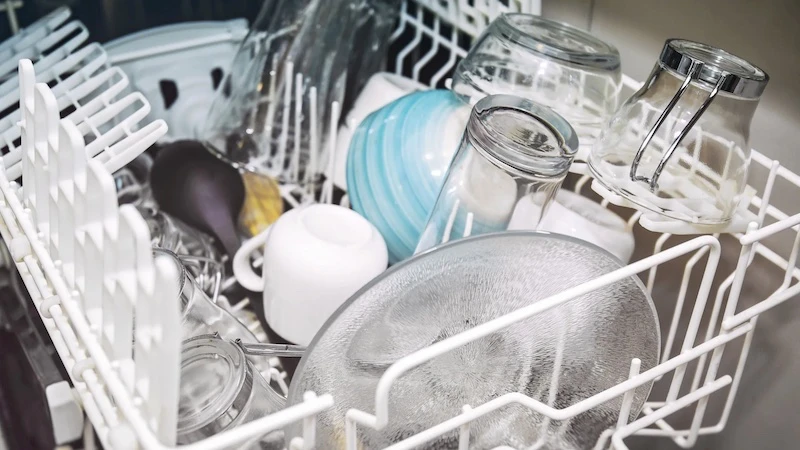
Quick Fixes for Common Problems
Once you’ve got the basics down, you can fine-tune for even better results. If you see…
- A Chalky White Film on Dishes: This is almost always hard water. The minerals (calcium and magnesium) are left behind when the water evaporates. The fix? First, always use a rinse aid. A product like Lemi Shine is fantastic for hard water areas. Second, you may need more detergent. For moderate hard water, try using about 1.5 times the recommended amount of powder. The extra detergent helps to soften the water, leaving enough left over to clean the food.
- Gritty Dishes and a Nasty Smell: Nine times out of ten, this means your filter is clogged. Which brings me to the most important part of this whole guide…
The 5-Minute Task That Will Save You Hundreds
I can say with 100% confidence that more than half of my service calls could be avoided with one simple task. It takes five minutes, once a month.
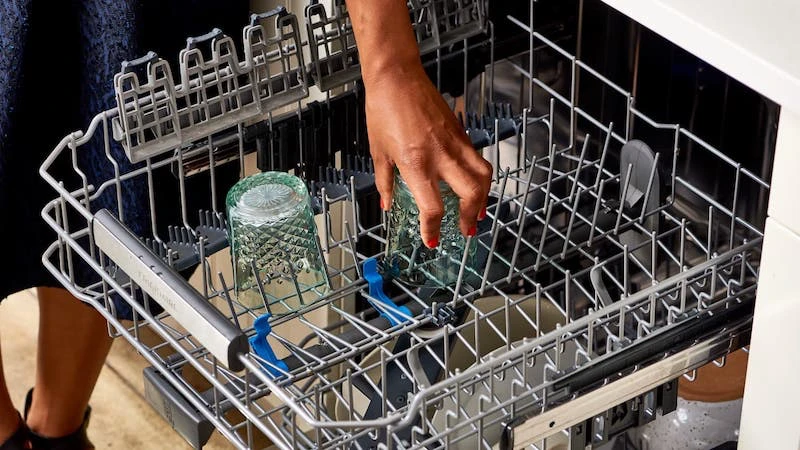
Quick Win: If you do nothing else after reading this, do this one thing. Go find your dishwasher’s filter and clean it. Seriously. Go do it now, I’ll wait.
Almost every modern dishwasher has a removable filter at the bottom of the tub. It’s there to catch bigger food particles before they clog the pump. To clean it, just twist to unlock the cylinder, pull it out (some have a flat mesh screen too), and wash it in the sink with a soft brush and warm, soapy water. I once pulled out a filter that had a whole chicken wing bone, three old pasta shells, and a wad of paper label that had turned to concrete. The customer swore the machine was broken. Nope, just a desperately clogged filter.
Once a month, you should also run an empty cleaning cycle on the hottest setting. You can use a dedicated cleaner like Affresh tablets—a pack might cost you $15 a year, the cheapest insurance you can buy for a $600+ appliance. Or, you can place a cup of white vinegar in a bowl on the top rack and run a cycle. Either way, it keeps the inside of your machine healthy. (Quick safety note: NEVER mix vinegar and bleach. The combination creates toxic gas.)
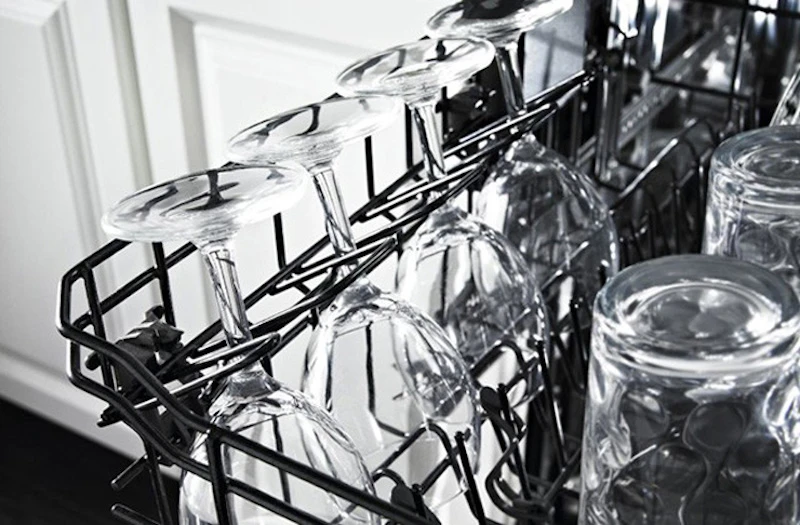
When It’s Time to Call for Backup
I want you to feel empowered, but I also want you to be safe. Sometimes, you just need a professional. Call for service if you see:
- Water on the floor: This could be a bad seal or hose. Turn off the power at the circuit breaker and call someone.
- Loud grinding noises: Something hard, like glass or a cherry pit, has likely gotten into the pump.
- It won’t drain: If you’ve cleaned the filter and the drain hose isn’t kinked, the clog is deeper in the system.
- Any electrical issues: If the panel is dead or it keeps tripping the breaker, don’t mess with it.
Your dishwasher is a true workhorse. Treat it right, and it will serve you well for years. A little bit of know-how makes all the difference, and your sparkling dishes will be all the proof you need.
Inspiration:
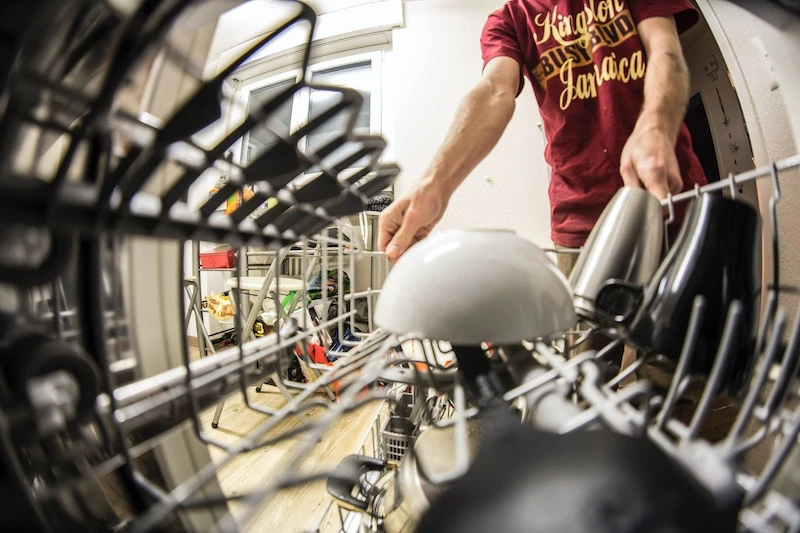
Pods/Tablets: The ultimate in convenience. Brands like Cascade Platinum Plus pack detergent, rinse aid, and degreasers into one tidy packet. They are powerful against baked-on food but are the most expensive option per wash.
Powder: The budget-friendly and flexible choice. You control the dose, using less for small loads or soft water, which prevents etching on glassware. It’s the go-to for many appliance pros who value precision.
Our take? For most households, high-quality pods offer the best performance. For those wanting to fine-tune their wash and save money, powder is an unbeatable classic. Gels? Technicians often advise skipping them due to weaker cleaning power on tough grime.










